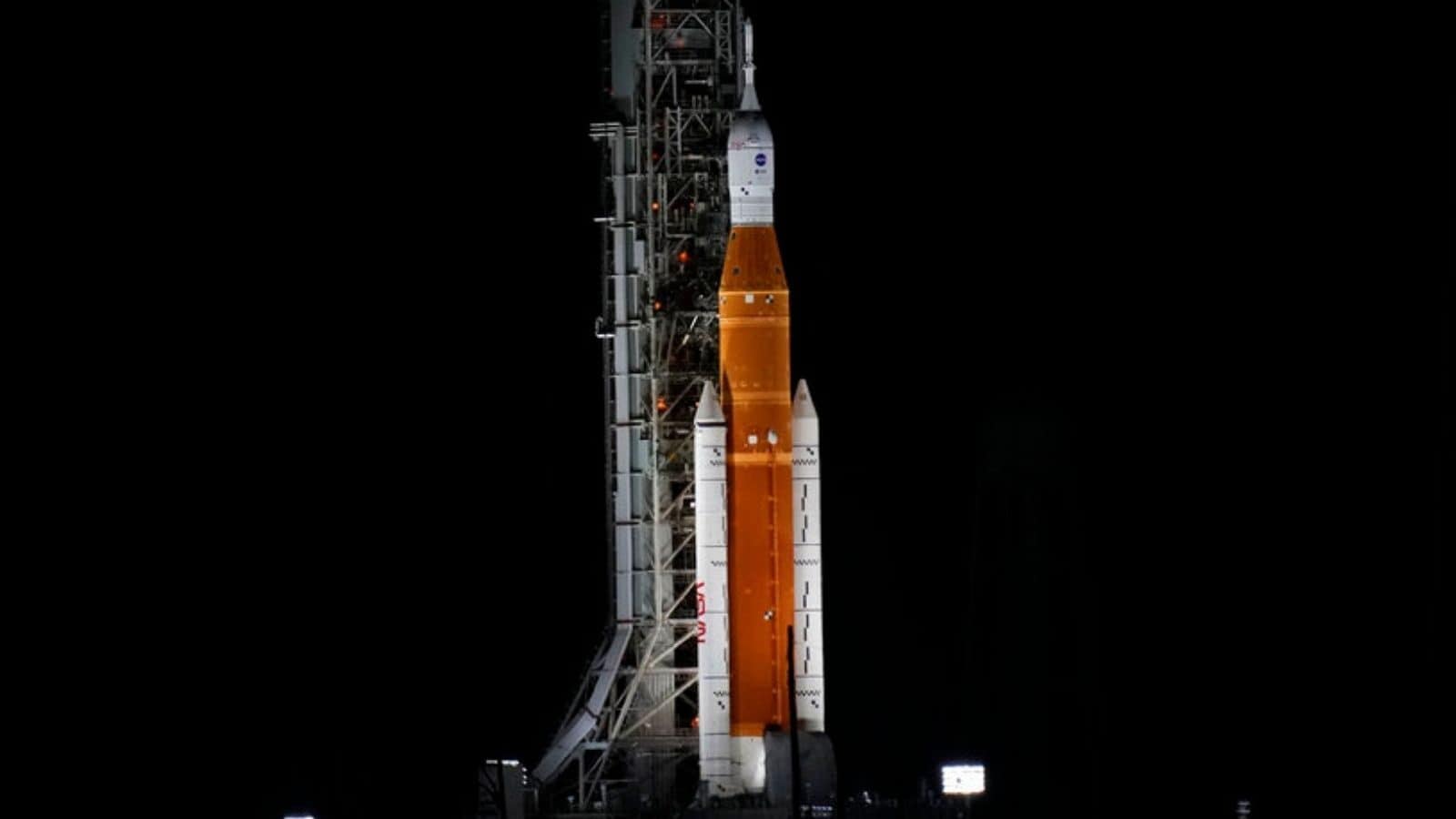NASA Artemis 1 Rocket will be making a third attempt to go to space on November 16. After finding that hurricane damage posed minimal additional risk to the test flight, it is currently on track for Wednesday’s scheduled liftoff of its new moon rocket.
The #Artemis era of exploration begins today with @NASAArtemis I, the first integrated test flight of the rocket and spacecraft that will bring humanity to the Moon.
The rocket launch is scheduled for 1:04 AM EST or 11:34AM IST on Wednesday, November 16.
A 10-foot (3-meter) chunk of caulking peeled away near the crew capsule at the top of the rocket last Thursday as a result of Hurricane Nicole’s strong winds. According to mission manager or NASA Artemis Rocket 1 Mike Sarafin, the material tore away in little parts rather than one long strip.
“We’re comfortable flying as is,” based on flight experience with this material, Sarafin told reporters Monday night.
NASA Artemis 1 Rocket is the most powerful rocket ever built
LIVE NOW: The #Artemis era of exploration begins today with @NASAArtemis I, the first integrated test flight of the rocket and spacecraft that will bring humanity to the Moon. Watch @NASA_SLS and @NASA_Orion embark on their first voyage. https://t.co/Ngak08VFb0
— NASA (@NASA) November 16, 2022
Liftoff is scheduled for the early morning hours of Wednesday from NASA‘s Kennedy Space Center, with test dummies rather than astronauts on board. It’s the first test flight for the 322-foot (98-meter) rocket, the most powerful ever built by NASA, and will attempt to send the capsule into lunar orbit.
The nearly monthlong $4 billion mission has been grounded since August by fuel leaks and Hurricane Ian, which forced the rocket back into its hangar for shelter at the end of September. The rocket remained at the pad for Nicole; managers said there wasn’t enough time to move it once it became clear the storm was going to be stronger than anticipated.
Sarafin acknowledged Monday night that there’s “a small likelihood” that more of the pliable, lightweight caulking might come off during liftoff. The most likely place to be hit would be a particularly large and robust section of the rocket, he noted, resulting in minimal damage.
Engineers never determined what caused the dangerous hydrogen fuel leaks during the two late summer launch attempts. But the launch team is confident that slowing the flow rate will put less pressure on the sensitive fuel line seals and keep any leakage within acceptable limits, said Jeremy Parsons, a deputy program manager.
The space agency plans to send astronauts around the moon in 2024 and land a crew on the lunar surface in 2025.
Astronauts last visited the moon in December 1972, closing out the Apollo program.
A microwave oven-size NASA satellite, meanwhile, arrived Sunday in a special lunar orbit following a summer liftoff from New Zealand. This elongated orbit, stretching as much as tens of thousands of miles (kilometers), is where the space agency plans to build a depot for lunar crews. The way station, known as Gateway, will serve astronauts going to and from the lunar surface.
The satellite, called Capstone, will spend six months testing a navigation system in this orbit.






